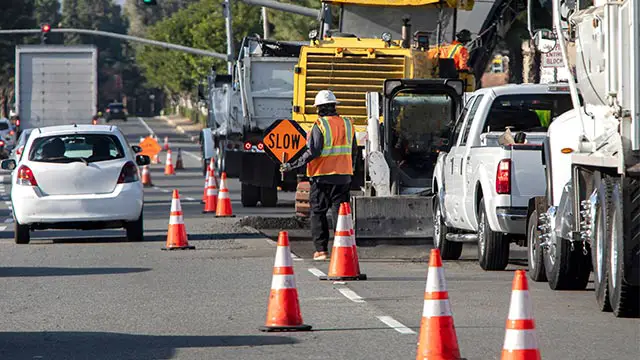If you’re planning to carry out any construction or maintenance work on public roads in Ireland, it’s essential to develop a traffic management plan to ensure the safety and health of both the road workers and road users. A traffic management plan, also known as a temporary traffic management plan (TTMP), is a set of documents that outlines the proposed measures to be implemented during roadworks to minimize the risk of accidents.
Who Should Develop a Traffic Management Plan?
A traffic management plan should be prepared by an experienced Temporary Traffic Management Designer with a valid certificate and knowledge of the current legislation. The Traffic Management Designer must carefully consider the characteristics of the site and develop a traffic management plan that best addresses the site constraints in a safe manner in so far as is reasonably practicable.
What Does a Traffic Management Plan Include?
A traffic management plan must cover the design, implementation, maintenance, and removal of the temporary traffic management measures to minimize the risk of accidents while the roadworks activity is carried out. Some of the key elements that should be included in a traffic management plan are:
- Hours of Work: The plan should specify the hours of work and the duration of the works.
- Project Details: It should provide details about the project, including its scope, objectives, and expected outcomes.
- Traffic Management System: The plan should specify the type of traffic control measures that will be used to direct vehicles and pedestrians around the worksite safely.
- Traffic Management Layout/Drawing: A traffic management layout or drawing should be included in the plan. It outlines the traffic control measures that are to be implemented and gives details on the type of control that should be implemented, safe movement of pedestrians, type of delineation device, safety barriers, etc.
- Phasing of Works: The plan should outline the sequence in which the works will be carried out.
- Traffic Management Signage: The plan should specify the type of signage that will be used to inform road users about the roadworks.
- Speed Limits: The plan should specify the speed limits that will be enforced around the worksite.
- Road Level: The plan should specify the level of the road and the type of surface that will be used.
- Design Parameters: The plan should specify the design parameters for the roadworks.
- Site Access & Egress: The plan should provide details about how workers will access the site and how they will exit the site.
- Communication and Emergency Procedure: The plan should specify the communication channels that will be used during the works and the emergency procedures that will be followed in case of an emergency.
Conclusion
A traffic management plan is an essential document that ensures the safety and health of both road users and road workers during construction or maintenance work on public roads. It must be prepared by an experienced Temporary Traffic Management Designer, carefully considering the characteristics of the site and developing a traffic management plan that best addresses the site constraints in a safe manner. The traffic management plan should be submitted to the relevant Local Authority for approval prior to carrying out any roadworks on public roads.
If you’re planning any construction or maintenance work on public roads in Ireland, don’t leave safety to chance. Contact us today to learn more about our traffic management planning services and how we can help you ensure the safety of road workers and road users.


